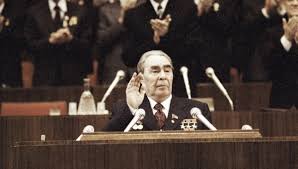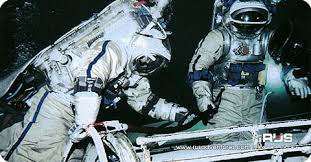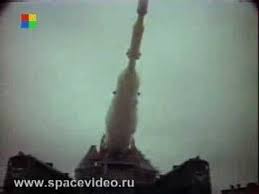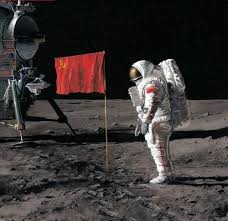Mishin along with the program managers and engineers had received high praise and decoration from the Soviet leadership for their winning of the Moon Race and Brezhnev himself was looking at him in a very positive light.


However now was the difficult decision of how to continue the program. They had enough N1s for one final L3 lunar landing at the beginning of 1970. This would send a clear message to the United States that the Soviet Union was not behind or giving up in the Moon Race, even if they had already won it. Any missions beyond L3-2 would require the Soviets to wait for the completion of later N1 allowing them to fly a third mission in the third or fourth quarter of 1970.

The crew selection for the first three L3 landing missions starting with Leonov and Makarov was for the original L1 crews to fly again. The commander (Vostok or Voskhod veteran) would land while the flight engineer (having flown only once prior on the L1 itself) would remain in lunar orbit. While Valeri Bykovsky (commander) and Nikolai Rukavishnikov (flight engineer) were in the suiting up for launch, Pavel Popovich and Vitali Sevastiyanov were training for the already approved L3-3 mission.


Finally after much preparation (during which Apollo 11 and 12 took the spotlight) L3-2's first N1 launched carrying it's LK into lunar orbit, followed in sequence by a crewed Soyuz just a month later. Unlike prior missions this was different as it featured a significant amount of colour photography and filmography (although L3-1 had taken a number of stunning colour photos) in order to advance their propaganda aims. Also it was a kind of extended duration mission which lasted up to 24 hours (slightly beating Apollo 11 by minutes) . In an obvious move to counter Apollo 12 L3-2 landed just 350 meters away from Luna 9 (the first spacecraft to soft-land on the Moon). It managed stayed in orbit for slightly longer as well performing a two-day long lunar orbital stay as they mapped and imaged the lunar surface.


Once again the return was normal except for a now recurring problem that happened on the previous L3 mission. Just after separation of the Orbital module while preparing to re-enter the spacecraft would depressurize, forcing the crew to rely on their pressure suits. While this wasn't a necessarily fatal problem (the pressure suits would protect them from the vacuum) it was a serious issue that needed resolving. Luckily they would have the time as no L3 mission could launch until the restarted N1 production allowed for a third flight in 1970. Until then Bykovsky, Vatili along with Makarov, Komarov, Titov and of course most of all Leonov adapted to being worldwide celebrities of the Moon. It was to them as if they arrived on a completely different world as Yuri Gagarin experienced when he returned
However now was the difficult decision of how to continue the program. They had enough N1s for one final L3 lunar landing at the beginning of 1970. This would send a clear message to the United States that the Soviet Union was not behind or giving up in the Moon Race, even if they had already won it. Any missions beyond L3-2 would require the Soviets to wait for the completion of later N1 allowing them to fly a third mission in the third or fourth quarter of 1970.
The crew selection for the first three L3 landing missions starting with Leonov and Makarov was for the original L1 crews to fly again. The commander (Vostok or Voskhod veteran) would land while the flight engineer (having flown only once prior on the L1 itself) would remain in lunar orbit. While Valeri Bykovsky (commander) and Nikolai Rukavishnikov (flight engineer) were in the suiting up for launch, Pavel Popovich and Vitali Sevastiyanov were training for the already approved L3-3 mission.
Finally after much preparation (during which Apollo 11 and 12 took the spotlight) L3-2's first N1 launched carrying it's LK into lunar orbit, followed in sequence by a crewed Soyuz just a month later. Unlike prior missions this was different as it featured a significant amount of colour photography and filmography (although L3-1 had taken a number of stunning colour photos) in order to advance their propaganda aims. Also it was a kind of extended duration mission which lasted up to 24 hours (slightly beating Apollo 11 by minutes) . In an obvious move to counter Apollo 12 L3-2 landed just 350 meters away from Luna 9 (the first spacecraft to soft-land on the Moon). It managed stayed in orbit for slightly longer as well performing a two-day long lunar orbital stay as they mapped and imaged the lunar surface.
Once again the return was normal except for a now recurring problem that happened on the previous L3 mission. Just after separation of the Orbital module while preparing to re-enter the spacecraft would depressurize, forcing the crew to rely on their pressure suits. While this wasn't a necessarily fatal problem (the pressure suits would protect them from the vacuum) it was a serious issue that needed resolving. Luckily they would have the time as no L3 mission could launch until the restarted N1 production allowed for a third flight in 1970. Until then Bykovsky, Vatili along with Makarov, Komarov, Titov and of course most of all Leonov adapted to being worldwide celebrities of the Moon. It was to them as if they arrived on a completely different world as Yuri Gagarin experienced when he returned
Last edited: